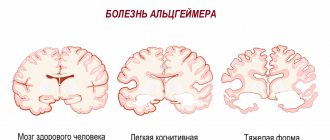Psychophysiology is the science of the physiological basis of behavior and mental activity. This article provides basic information about it. You will learn the history of its origin, features of the methodology, its significance, as well as some other important information about this science.
Psychophysiology is a special branch of psychology and physiology that studies the role of biological factors (these include the properties of the nervous system) in ensuring mental activity. Scientists distinguish differential psychophysiology, speech and thinking, sensations and perception, attention, emotions, voluntary actions. Currently, all these areas of knowledge are actively being developed.
The reason for the emergence of psychophysiology
Today, the question of the relationship between psychology and physiology is still open. It cannot be said unequivocally that the first is part of the second or the second is part of the first. However, there is no doubt that mental and physiological processes are parts of one psychophysical whole. There is also no doubt that ideas about this whole, so necessary for practical purposes, cannot be obtained separately either by physiology or psychology. It was to satisfy the need for knowledge about a person as a whole, and not for purely corporate or organizational reasons, that a new branch of biology called psychophysiology appeared. This science examines a very wide range of issues. The level of complexity of the problems it studies is much higher than that of psychology or physiology separately.
Interdisciplinarity of psychophysiology, probabilistic methodology
Psychophysiology is a field of knowledge that is interdisciplinary. It examines the organization of relations between probabilistic mental, physical and spiritual phenomena and human essences. Psychophysiology is a discipline that, for effective cognition, uses a set of principles, prerequisites, means and methods of cognition that allow scientists to study a specific object, which is a person. Thus, a probabilistic methodology is applied. It is necessary to say a few words about her.
Psychophysiology is a science that studies humans using probabilistic methodology. The latter was started back in 1867 by the English physicist James Clerk Maxwell. Probabilistic methodology claims to be universal in science. Maxwell is the first scientist to apply its methods to characterize probabilistic physical reality. This researcher is considered the creator of statistical physics. Probabilistic methodology has one important advantage over deterministic (traditional) methodology. It provides much more complete knowledge about the object being studied.
The meaning of psychophysiology
In the modern world, psychophysiology has become an important component for other sciences.
Taking into account the basics of psychophysiology, scientists are trying to equip personal computers with devices that read the user’s state. Such features will allow you to create a health-safe interface.
In the fields of cybernetics and robotics, experiments are being conducted to create artificial intelligence. Such bold attempts may one day yield good results. The world will become more automated and productive.
For medicine, prosthetics are being developed that can fully respond to signals from the owner’s brain. This will improve the lives of patients and make it more comfortable.
Creation of psychophysiology
It officially took shape in the mid-19th century. Its recognized creator is A.R. Luria, an outstanding Russian scientist (pictured above). Having a double education (psychological and neurological), he was able to combine the most important achievements of these disciplines into a single whole. The result of the work done was the combination of psychophysiology and neuropsychology.
For a long time it was generally accepted that the soul is incorporeal. In other words, the brain has nothing to do with it. Later, scientists began to locate mental functions in the three ventricles of the brain. Moreover, each of the ventricles was considered a storage place for the reflected impressions of the soul. It was believed that it is the abode of ideal images. The brain was considered as an organ from which vital energy, under the influence of will, flows into parts of our body through special channels called nerves.
Subsequently, thanks to the works of various scientists, mainly domestic (I. M. Sechenov, I. P. Pavlov, P. Ya. Galperin, A. N. Leontyev, A. R. Luria, N. A. Bernshtein, etc. ), a fairly clear idea was drawn up of the importance of the CNS (central nervous system) for the human psyche.
Subject, tasks, methods of psychophysiology
Psychophysiology is a science that studies the physiological mechanisms of subjective phenomena, states and individual mental differences. The subject of its study is the physiological foundations of human mental activity and behavior. It is more difficult to determine the object that psychophysiology studies, since it turns out to be that part of human physiology that is directly related to mental manifestations (for example, instincts, dynamic stereotypes) and that part of mental processes that are connected and can be explained from the point of view of physiology (stressful conditions, emotions, etc.)
The term “psychophysiology” appeared at the beginning of the 19th century, it was used by the French philosopher N. Massias to refer to those studies of the psyche that were based on precise objective physiological methods. A very similar term “physiological psychology” was used by W. Wundt in his works at the end of the 19th century. Our outstanding compatriot A.R. Luria, in his works published in the 70s of the last century, separated these two concepts, determining that physiological psychology studies the physiology of individual complex mental processes and functions, and psychophysiology seeks the physiological foundations of holistic forms of human and animal behavior.
Having one discipline in the curriculum “Psychophysiology”, we will talk about individual mental processes and holistic forms of behavior.
A significant contribution to the development of psychophysiology was made by the works of L.S. Vygotsky, who first formulated the need to study the problem of the relationship between psychological and physiological systems. These ideas were developed by P.K. Anokhin in his theory of functional systems, based on the understanding of mental and physiological processes as highly complex functional systems united into complexes, the action of which is aimed at achieving a useful, adaptive result. One of the main components of this complex process is the principle of self-regulation of physiological functions, formulated in Russian physiology by N.A. Bernstein. In the process of presenting the material, we will meet many more names of domestic and foreign scientists who presented their scientific discoveries to the world and, of course, to you and me, dear colleagues, who want to better understand the mechanisms and levers of the human psyche.
The emergence of psychophysiology as one of the branches of neuroscience is associated with the successes achieved in the field of studying neural activity. In the 1920s, a strong school of electrophysiologists was formed in England (Cambridge), headed by A. Adrian. She made major contributions to the study of electrical activity of neurons and to the general theory of EEG. The term “psychophysiology” appeared at the beginning of the 19th century, it was used by the French philosopher N. Massias to refer to those studies of the psyche that were based on precise objective physiological methods. A very similar term “physiological psychology” was used by W. Wundt in his works at the end of the 19th century. This was a tribute to the same debate about the primacy of the psyche or body, which continues to this day. Our outstanding compatriot A.R. Luria, in his works published in the 70s of the last century, tried to separate the subjects of psychophysiology and physiological psychology, determining that physiological psychology studies the physiology of individual complex mental processes and functions, and psychophysiology seeks the physiological foundations of holistic forms of human and animal behavior. In any context, it is clear that psychophysiology is an interdisciplinary science that combines the concepts of neurophysiology and higher nervous activity and that part of psychology that operates with objective criteria.
P.'s main task is the causal explanation of mental phenomena by revealing the underlying neurophysiological mechanisms. The successes of modern psychology are due to the fact that, along with traditional methods (registration of sensory, motor, and autonomic reactions, analysis of the consequences of brain damage and stimulation), electrophysiological methods (electroencephalography, etc.) as well as mathematical methods for processing experimental data have become widespread in research practice. . The theory of nerve networks formulated by W. McCullagh and W. Pits had a significant influence on the development of psychophysiology. Its experimental rationale was presented in their publication jointly with J. Letvin, X. Maturana entitled “What the eye says to the brain of the frog” (1959). Researchers were the first to describe a special type of retinal neurons that selectively respond to certain physical properties of visual stimuli. They coined a new term to refer to these neurons: detector. In the frog retina, they discovered several groups of detector neurons: driving angle, contrast, boundary, etc. The success of this group of researchers was largely due to their introduction of a new technique for studying the properties of neurons. Instead of standard point stimuli (spots of light) or turning on and off diffuse lighting, they used stimuli found in the frog’s natural habitat: light or dark figures of different shapes and sizes (moving lines, stripes, corners). In addition, when recording the electrical activity of individual neurons, the researchers abandoned the standard form of experiment with anesthesia and immobilization of the animal.
The development of detector theory was strongly influenced by the work of D. Hubel and T. Wiesel, who in the 60s formulated the modular principle of organizing neurons in the cerebral cortex, showing the existence of “columns” - combining neurons into groups with similar functional properties (Hubel D., 1990).
Many new classes of neurons have been discovered that are specifically associated with various mental processes. Among them is a special type of sensory neurons - gnostic units that encode holistic images. Concept of Gnostic units
belongs to Yu. Konorsky, who suggested that recognition of a familiar face at first sight, a familiar object, a familiar voice from the first spoken word, a familiar smell, a characteristic gesture, etc. corresponds to the excitation not of a cellular ensemble, but of individual neurons corresponding to individual perceptions. Direct study of neural activity in the cortex of higher animals confirmed his concept of gnostic neurons. In the inferotemporal cortex of the monkey, neurons were found that selectively respond to the appearance of the face of a particular person, monkey, to facial expressions expressing a certain emotion, to hand positions (gestures), as well as to various inanimate objects.
A special class of neurons is described, called target neurons. These neurons selectively respond to the appearance of a target object: the sight or smell of food. Target neurons are found in the hypothalamus, temporal cortex, and caudate nucleus of the monkey. A.S. Batuev discovered target neurons in the parietal and frontal cortex in the monkey. Their reactivity depended on the animal's motivational arousal (hunger). Only in a hungry monkey do target neurons respond to the type of food; as the animal becomes full, their response disappears.
Novelty neurons, which are activated by the action of new stimuli and reduce their activity as one becomes accustomed to them, are found in the hippocampus, nonspecific thalamus, reticular formation of the midbrain and other structures. Identity neurons have also been found in the hippocampus, recognizing familiar (repeated) stimuli. V.B. Shvyrkov identified a group of search behavior neurons that become active only during the rabbit’s orienting and exploratory behavior.
A special group consists of environmental neurons that are selectively excited when the animal is in a certain part of the cell. Neurons of the environment were found by Yu.I. Aleksandrov in the motor, somatosensory and visual cortex of the rabbit. The environment neurons in the cortex are similar to the place neurons found by O'Keefe in the rabbit hippocampus. Place neurons are also activated only when the animal is located in a certain location in the experimental space.
Data in psychophysiology can be obtained through the use of many different mathematical, physical, chemical, physiological, psychological, and sociological techniques. Methodology is a specific embodiment of a method in the form of its particular implementation when solving a specific scientific, theoretical or practical problem, a set of specific practical techniques for doing something. Examples of techniques that can be used in psychophysiology.
Science begins where there is a specific problem. The psychophysiological problem is the question of the active systemic interaction between the body and the psyche. There are different views on how the body and the psyche relate, however, this dispute has not yet been finally resolved. The history of the scientific debate about the role of the body and psyche in human life, as well as their relationship, goes back more than one century. Beginning in the 17th century with the works of R. Descartes, this debate attracted such outstanding scientists as T. Hobbes, G. Leibniz, B. Spinoza, L. Buchner, K. Vogt, J. Moleschott. In the middle of the 20th century, students of I.P. Pavlov joined the debate, trying to explain the most complex mental processes by a simple sum of conditioned reflexes. A rational, consistent solution to a psychophysiological problem is well formulated by the famous Russian psychologist and psychophysiologist Yu. B. Gippenreiter: “There is a single material process, and what is called physiological and mental are simply two different sides of a single process.” However, the problem has not been completely settled and now debates about the primacy of the psyche or physicality are flaring up with renewed vigor.
The works of I.M. Sechenov, I.P. Pavlov, V.M. Bekhterev, A.A. Ukhtomsky laid down the basic ideas about the driving factors of behavior. A significant contribution to the development of psychophysiology was made by the works of L.S. Vygotsky, who first formulated the need to study the problem of the relationship between psychological and physiological systems. These ideas were developed by P.K. Anokhin in his theory of functional systems, based on the understanding of mental and physiological processes as highly complex functional systems united into complexes, the action of which is aimed at achieving a useful, adaptive result. One of the main components of this complex process is the principle of self-regulation of physiological functions, formulated in Russian physiology by N.A. Bernstein. Modern trends in psychophysiology were laid in their works by A. R. Luria, I. S. Beritashvili, L. V. Krushinsky, M. N. Livanov, V. S. Rusinov, E. N. Sokolov. In the process of presenting the material, we will meet many more names of domestic and foreign scientists who presented their scientific discoveries to the world and, of course, to you and me, dear colleagues, who want to better understand the mechanisms and levers of the human psyche.
So, the object of study of psychophysiology, ultimately, is the activity of the brain and, associated with this activity, the behavior of humans and animals.
Subject of psychophysiology: physiological correlates of mental activity in humans and animals.
The purpose of studying psychophysiology: a deep understanding of the physiological mechanisms of human behavior and their use for psychodiagnosis and psychocorrection.
The objectives of psychophysiology as an academic discipline are:
· Study of the physiological mechanisms of receiving, transmitting and analyzing information about the external and internal environments of the body by the central nervous system
· Study of decision-making mechanisms and their implementation at the level of the brain and the body as a whole
· Knowledge of the physiological basis of attention, motivation, memory, thinking, movement
· Knowledge of the physiological basis of emotional reactions in normal and stressful situations
· Knowledge of the mechanisms of dysfunction of physiological functions associated with the human psyche
· Ability to use observation of the dynamics of physiological parameters for the purposes of psychodiagnostics
· The ability to exert a corrective influence on the patient’s psyche and behavior, using knowledge of the physiological correlates of mental processes.
· The ability to use psychocorrection to positively influence altered physiological parameters and conditions of the patient’s body.
Structurally, psychophysiology is divided into psychophysiology of the senses, behavior, differential and age. The factual and theoretical basis for the psychophysiology of the senses and the psychophysiology of behavior are related disciplines: anatomy of the central nervous system, neurobiology, neurophysiology, physiology of higher nervous activity and sensory systems, psychosomatics, psychopharmacology, neuropsychology, differential and developmental psychophysiology.
When studying psychophysiology we will encounter a number of scientific dilemmas. Here are just a few of them:
1. Physiological irritations - mental sensation;
2. Physiological reactions - mental state;
3. Movements - action;
4. Properties of the nervous system - temperament;
5. Makings - abilities.
Whether they turn out to be true or false, let's try to figure it out using the facts accumulated to date by physiology and psychology.
Traditionally, psychophysiology includes several areas of study.
· Psychophysiology of sensations and perceptions studies nervous processes in sensory systems, starting with receptors and ending with associative cortical centers.
· Psychophysiology of speech and thinking studies the functional role of different areas of the brain and their relationships in the implementation of speech processes. It is fundamentally important that verbal functions are closely related to mental processes.
· Psychophysiology of emotions studies the nervous and neurohumoral mechanisms of the occurrence of emotional states. The nerve “centers” of pleasure and displeasure located in the diencephalon and other subcortical structures have been discovered. An important role in emotional behavior of hormones and biologically active substances has been established.
· Psychophysiology of attention studies the neurophysiological correlates of attention (changes in EEG and evoked potentials, changes in galvanic skin and other reactions).
· Psychophysiology of biological rhythms, sleep and wakefulness.
· Psychophysiology of memory
· The psychophysiology of voluntary actions reveals the physiological structure and mechanisms of their implementation.
· Differential psychophysiology studies the dependence of individual characteristics of the psyche and behavior on individual and age-related differences in brain activity.
· Clinical psychophysiology reveals the features of the manifestation of physiological and mental correlates in various diseases and conditions of the body.
Psychophysiology is a reliable scientific support for a psychologist who dares to invade the patient’s mental world, understand his problems, help him understand himself, and jointly find the right solution to a problem situation. The ability to restore and maintain psychophysiological homeostasis, that is, the constancy and harmony of mental and physiological components characteristic of the patient, indicates the high competence of a practicing psychologist.
Natural scientific method I.M. Sechenov
I.M. Sechenov developed a special natural scientific method. Its essence can be defined by the following two principles:
- all kinds of mental phenomena are a product of the activity of the central nervous system, which means they obey the laws according to which other natural phenomena develop;
- it is necessary to adhere to the principle of historicism in the study of the psyche, that is, to go from the lower forms of its activity to the highest, from simple to complex, from the study of the animal psyche to the study of its specificity in humans.
Sechenov, applying these principles, approached the creation of a materialistic theory of reflection.
Works of I. P. Pavlov and further research
In the works of I.P. Pavlov, a famous Russian physiologist, the reflex theory was further developed. This scientist was the first to use an objective method of studying the mental functions of the brain, which was the conditioned reflex. Taking it into service, Pavlov investigated the physiological mechanisms in a number of processes that form the basis of elementary mental reactions. The works of this scientist, as well as representatives of his school, opened a new horizon in the study of brain activity experimentally.
Later, electrophysiological studies, supplemented by the method of conditioned reflexes, helped establish the fact that many mental processes are based on a certain functional organization in the structures of the brain. For example, we can consider memory as the result of the process of circulation of excitations along circuits of neurons that are closed, with further fixation at the molecular level of certain changes.
Emotions depend on how active certain centers located in the subcortical structures of the brain are. Currently, many mental reactions are reproduced artificially. For this purpose, the parts of the brain responsible for them are specially irritated. On the other hand, the brain, as well as the body as a whole, is reflected in everything that deeply affects our psyche. Thus, depression or grief can cause psychosomatic (physical) illnesses. Hypnosis can help heal or cause physical disorders. Witchcraft or violation of “taboo” among primitive peoples can even kill a person.
Psychophysiology of sleep
Sleep is a specific functional state of the nervous system and the body as a whole with characteristic behavior and psychophysiological indicators.
Physiological changes during sleep.
- The most common sleep symptoms include decreased nervous system activity and loss of contact with the environment due to sensorimotor disturbances.
- The threshold of any sensitivity (vision, hearing, taste, smell and touch) increases during sleep. The threshold can be used to estimate the depth of sleep. In the first four phases, the detection threshold increases by 30-40%, and in the REM sleep phase - by 400%.
- Reflex function during sleep is severely impaired.
- Conditioned reflexes are inhibited, unconditioned reflexes are significantly reduced. However, certain types of cortical activity and responses to certain stimuli may persist during normal interrupted sleep. For example, a sleeping mother hears the sounds of a sick child moving. This phenomenon is called partial vigilance.
- Most muscles are at rest during sleep and a person is able to maintain a certain posture for a long time. This improves the tone of the muscles that close the eyelid, as well as the circular muscles that close the bladder. As you fall asleep, your heart and breathing slow down and become more regular.
Object of knowledge and subject of psychophysiology
General psychophysiology is the science of the life activity of a healthy person. The clinical one (more about it at the end of the article) studies sick people.
Man, as we know, has three hypostases. Psychophysiology is a science that takes into account all levels of its organization. Man has the unity of the following three probabilistic essences:
- bodily (physical, carnal);
- mental (mental);
- spiritual.
Consequently, the subject of psychophysiology is the physical, mental and spiritual essences of man in their interdependence and interconnection. This discipline, thanks to the success of studying the activity of neurons in the brain of animals, as well as in connection with the possibility of clinical examination of people, began to consider not only physiological, but also neural mechanisms of various mental states, processes and behavior. Modern psychophysiology deals, among other things, with the study of neural networks and individual neurons. This is determined by the current trend towards the integration of various disciplines that study the functioning of the brain (neurochemistry, neurophysiology, neuropsychology, psychophysiology, molecular biology, etc.) into a single neuroscience.
The different branches of the discipline we are interested in have their own subject matter. Physiological psychophysiology, for example, studies patterns of behavior and mental response, which depend on the state of physiological parameters, on the speed of reactions of the peripheral and central nervous systems, as well as the soma as a whole (at the systemic, tissue and cellular levels).
The main theories of psychophysiology.
The number of methods and capabilities of brain research allow scientists to regularly reveal new facts about humans. One of the shocking news is the refutation of the theory of Nobel laureate Roger Sperry about “right-brain” and “left-brain” abilities. In fact, both hemispheres are equally involved. The point is not in their “development”, but in the number of neural connections.
There are other theories that refute established ideas about the brain. What other interesting facts does neuroscience give us:
- Nerve cells actually regenerate themselves, a process called neurogenesis.
- The level of intelligence does not depend on the size of the brain.
- The main purpose of the brain is learning.
- The state of the body affects the perception of the outside world much more than it seems.
- The brain can record information bypassing consciousness.
- The brain itself makes a decision, and then “convinces” us that this is our choice.
- In fact, the brain uses its potential at 100% (and not at 9-10%, as was previously thought).
- Brain development does not end at age 25, but thinking abilities depend on its plasticity.
- Our memory does not deteriorate, it just cannot cope with so much information.
- The psyche reacts to verbal insults in the same way as to a blow to the head with a stick.
- Applying your palm to the sore spot reduces the pain by about 3 times.
One of the most revealing psychophysiological processes is motivation. It controls human behavior, gives energy, enhances organization, concentration, and activity. One of the most surprising is mirror neurons, which control our ability to empathize.
Take the EQ emotional intelligence test
The Meaning of Discipline
The discipline we are interested in complements psychology, neuroscience, psychiatry, pedagogy and linguistics. Psychophysiology is a necessary link through which the human psyche is considered as a whole, including many complex forms of behavior that remained studied before its emergence.
For example, if you know which stages of ontogenesis are most sensitive to certain pedagogical influences, then you can influence the development of very important physiological and psychophysiological functions, such as memory, thinking, attention, perception, motor activity, mental and physical performance, etc. If you have an idea of the age-related characteristics of a child’s body, you can best reveal his physical and mental abilities, develop scientifically sound valeological and hygienic requirements for health-improving and educational work, organize a daily routine, physical activity and nutrition that suits individual needs. -constitutional characteristics and age. In other words, pedagogical influences can be optimal and effective only when they take into account the age characteristics of the child and adolescent and the capabilities of his body.
Age-related physiology and psychophysiology
Age-related physiology is a science that studies the characteristics of the life activity and development of the body during ontogenesis. She studies the functions of the body as a whole, organ systems and individual organs as they grow, and the uniqueness of these functions at different age stages.
Ontogenesis is the central concept of such a discipline as age-related physiology. It was introduced back in 1866 by E. Haeckel. In our time, ontogenesis refers to the individual development of an organism throughout its life (from the moment of conception to death).
Age-related physiology and psychophysiology took shape relatively recently. The first emerged only in the second half of the last century. Embryology is a science that studies the characteristics and patterns of the body’s vital functions at the stages of intrauterine development. Later stages, from maturity to old age, are considered by gerontology.
Age-related physiology uses various research methods, including the morphological characteristics of the body (its length, weight, waist and chest circumference, hip, shoulder circumference, etc.). This discipline is one of the branches of developmental biology, a very broad field of knowledge.
Psychophysiology of stress
Stress is the human body’s reaction to overload, negative emotions, or simply monotonous excitement.
Conditions of stress.
Any stimulus is interpreted in two ways:
- from the objective side (in the cerebral cortex);
- from the subjective side (in the limbic system).
When a subjective assessment speaks of a threat, i.e., has a negative affective connotation (fear, anger), it acquires a trigger role, automatically causing a series of corresponding physiological reactions. If the threat is not perceived, there is no stress reaction.
Consequences.
- All systems are responsible for stress - nervous, endocrine, cardiovascular, gastrointestinal, etc.
- Very often, especially after prolonged stress, weakness occurs due to overwork of the whole body.
- Stress associated with chronic gastritis usually causes a deterioration in the activity of the “weakest” cell in the body, an already diseased organ, such as a stomach ulcer.
- Stress increases the risk of infection by weakening the body's immune system.
- Most often, stress affects the cardiovascular system.
- During times of stress, breathing becomes faster.
- An increase in blood sugar, which is also part of the body's response to stress, starts a chain reaction in which all body systems are affected in one way or another.
Ways to cope with stress.
- Active - cognitive (a person tries to control the assessment of stress);
- Active behavior (personal behavior is focused directly on stress);
- Avoiding stress.
Features of human ontogenesis
The origin of man influenced the features of his ontogenesis. In the early stages, it has a certain similarity with the ontogenesis characteristic of higher primates. However, the specificity of man is that he is a social being. This left an imprint on its ontogenesis. First of all, the period of childhood has increased. This is due to the fact that a person needs to learn a social program during training. In addition, the period of intrauterine development has increased. Puberty in humans occurs later than in great apes. The periods of growth spurt, as well as the transition to old age, are clearly marked out for us, unlike these animals. Our overall life expectancy is longer than that of the great apes.
How to strengthen mirror neurons and develop empathy?
Even if we don’t smile, the facial muscles react to someone else’s smile - this is a proven fact. During a study conducted by scientists, a person had to clench a pencil in his teeth and watch other people. It turned out that the facial muscles fixed in this way could not react, and as a result, the person recognized other people’s emotions worse.
It's all about mirror neurons. These special cells of the cerebral cortex help us “try on” other people's movements and emotions. The point of motor mirror neurons is to repeat the movements of others and learn yourself. Emotional mirror neurons help you feel what another person feels.
Empathy helps you understand other people. The ability to empathize is not inherited and does not depend on the level of intelligence. Empathy is a very human quality, conditioned by the norms of human society and moral values. It is impossible to force yourself to sympathize. Of course, it is not a lack of mirror neurons that can be cited. But you can develop the skill of empathy.
Take the empathy test
Train.
Empathy can be learned by reading books, communicating, watching films or plays. For example, watch psychological films for training and put yourself in the shoes of the main character. You can pause the film in moments of difficult choices or changing circumstances and think about what you would do in a similar situation. This will be a useful workout.
Look for a person.
This technique for heightening empathy has its origins in Buddhist practices: spend a day thinking about the person who has a hand in your daily life. Our lives are directly connected with the lives of other, unknown people: sellers, trolleybus drivers, repairmen. Connecting with strangers unlocks your empathic potential. You can not only meet different people, but also overcome barriers: racial, religious, national.
Learn to listen.
This means not just being present, but hearing your interlocutor, trying to understand the meaning of his judgments. It is also useful to “listen” with your eyes - pay attention to the microfacial expressions of your interlocutor. Facial microexpressions last only moments, but they help to recognize true emotions.
Put yourself in the shoes of your interlocutor.
This universal technique helps not only to understand the interlocutor, but to respond to his words with the right questions and comments. By understanding the experiences of the interlocutor, it is easier to grasp the essence and respond correctly - so that the person will want to tell even more.
Help your interlocutor feel free.
In tense moments, you can nod to your interlocutor or make an appropriate gesture to encourage him to talk further. But at the same time, eliminate any distractions: do not click the pen button, do not rustle the paper, turn off the phone ringer.
Listen to the general meaning, not individual words.
Perhaps the most difficult thing is to try to grasp the general meaning, and not be distracted by individual phrases or expressions. Concentration and the absence of distracting sounds will certainly help you see the whole picture.
Watch for nonverbal cues.
Eye movements, crunching of fingers, nervous chuckles, rapid breathing - all this is introduced into the general context of communication. Sometimes body movements can provide more information than spoken words. And all because they are focused on the unconscious and are perceived by us at a more “subtle” level.
Keep your distance.
According to S. Freud, people with empathic abilities easily pass other people's emotions through themselves. This is where you need to be careful. Sometimes too intense empathy pushes the listener to protect the interlocutor from strong experiences. Together with experiencing other people's pain, grief, and traumatic events, this can become a difficult test for the listener.
Age norm and rate of development
It is very important for both the teacher and the doctor to understand the level of development of the child with whom they work. Age-related physiology and psychophysiology determine what is considered the norm and what is a deviation from it. Any significant developmental deviation means the need to apply non-standard methods of treatment and education to a person. Therefore, one of the most important tasks of developmental psychology is to establish the parameters that determine the age norm.
It should be noted that the pace of development does not always correlate with its final level. Slowing down this process often leads to the achievement of outstanding abilities by a person (albeit later than his peers). On the contrary, often accelerated development ends too early. As a result, a person who initially showed great promise does not achieve high results in adulthood.
Strong deviations in the rates of development and growth are relatively rare. However, small variations that result in moderate leads or lags are common. How should we treat them? Are these manifestations of deviations in development or its variability? Age-related physiology provides answers to these and other questions. It develops criteria to judge the extent of deviations from the norm and the need to take measures to eliminate them or mitigate their consequences.
Psychophysiology of intelligence
The psychophysiological approach is based on the assumption that certain characteristics of the brain determine the properties of mental processes and constitute the physiological basis of mental abilities.
The most important representative of psychophysiological reductionism is G. Eysenck, who believed that intelligence is determined by the speed of information processing by the nervous system. The speed of information processing is related to the level of activation of the nervous system. Referring to his research, he draws the following conclusions:
1) in normal children the correlation between EEG parameters and IQ is small;
2) especially pronounced in children with mental retardation and borderline developmental delay;
3) children who are more mature in terms of EEG parameters have a higher IQ;
4) EEG frequency distribution is more correlated with IQ than topographic distribution.
In addition, averaged evoked potential (AEP) amplitudes were found to be positively correlated with IQ, while latency and EP offset were negatively correlated: correlations ranged from 0.20 to 0.40.
Clinical psychophysiology
It is an important applied area of psychophysiology. This is an interdisciplinary field of knowledge that examines the physiological mechanisms of various changes in mental activity in somatic and mental pathologies, as well as their influence on each other.
Clinical psychophysiology is a discipline that also involves the study of pathogenetic mechanisms, etiological factors, professional rehabilitation and treatment of psychosomatic diseases. It cannot do without the knowledge and methods of a number of related disciplines (neurochemistry, neurophysiology, experimental psychology, neuropsychology, neuroradiology, etc.). Through field surveys and laboratory experiments, it is possible to understand how human behavior and experience affect regulatory processes and physiological responses. From this we can deduce the patterns of psychosomatic relationships.
As a rule, the measured psychophysiological quantities are recorded non-invasively on the surface of the human body (as a result of the activity of the functional systems of the body). Their physical properties are measured using sensors. These sensors record and at the same time amplify the detected indicators, so that the resulting values can be converted into biosignals. Taking this method as a basis, researchers draw a conclusion about what somatic processes underlie a particular phenomenon and their dynamics during the influence of psychotherapy.
So, psychophysiology is a science, the definition of which is presented at the beginning of the article. We talked about its subject, method, history of origin and development, as well as some important branches. Psychophysiology is a science that studies both the psyche and physiology of a person, therefore it is interdisciplinary in nature.
Directions of psychophysiology
Psychophysiology studies the relationship and correlation of mental processes with an organic substrate. And also, the influence of biological influence on the psyche is assessed.
For psychophysiology, the main aspects of study are:
- thinking and speech;
- emotional manifestations;
- physical activity;
- memory and learning processes;
- voluntary actions;
- dream;
- state of stress;
- functional states.
In the modern world, psychophysiology is divided into separate scientific fields.
- Neuropsychology studies brain structures and their interaction with the psyche.
- Neurophysiology studies the nervous system from a functional perspective.
- Psychodiagnostics is an instrumental area of psychology. She works with individual personality traits. As part of psychodiagnostics, questionnaires are used to examine the human psyche.
- The goal of psychogenetics is heredity and variability of psychophysiological properties.
- Psychophysics studies the range of sensations associated with physical processes that can be measured.
- Psychosomatics deals with bodily diseases associated with the influence of mental factors.
- Clinical psychology is close to psychiatry. She studies the combination of mental manifestations and diseases. Methods of clinical psychology make it possible to carry out rehabilitation activities with patients suffering from mental disorders.
- Developmental psychology studies changes in the psyche from the point of view of the natural development of a person. This field of science evaluates development during ontogeny (the period of an organism's life), but relies on knowledge about the phylogenetic development (the period of evolutionary development) of the species.
- Pathopsychology compares mental indicators in mental illness with the norm. It is a component of clinical psychology.











